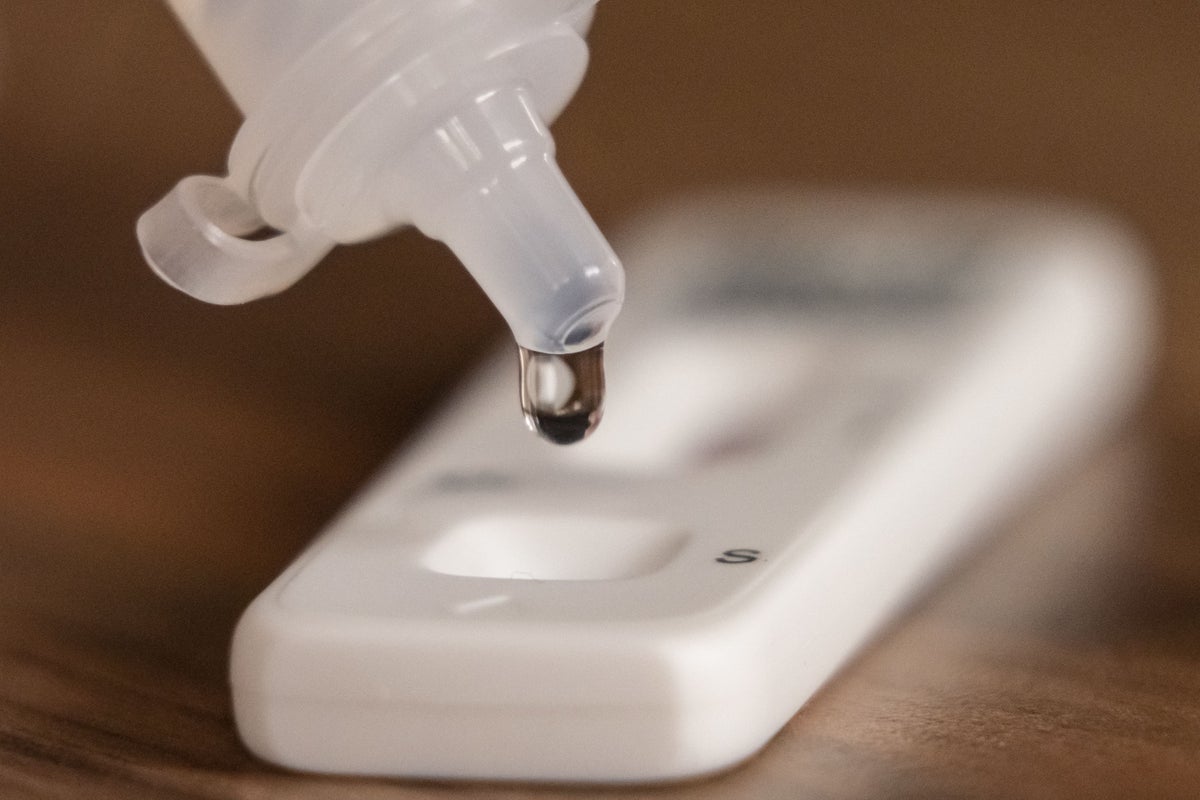
Total Covid-19 infections in the UK have increased for the fourth week in a row, but there are signs the latest rise might be slowing down.
Levels have continued to go up in England and Wales but have fallen in Northern Ireland, while the trend in Scotland is uncertain.
Infections among school-age children in England have dropped for the second week in a row, though they are still rising among those aged 25-49 and the over-70s.
An estimated 1.5 million people in private households in the UK were likely to have Covid-19 in the week ending February 21, up 6% from 1.4 million the previous week, according to the Office for National Statistics (ONS).
This is the smallest week-on-week percentage increase since the current rise in infections began at the end of January.
A surge in the virus in the run-up to Christmas saw infections peak just below three million at the end of December.
The figure then fell for much of January before rising again in recent weeks.
The latest increase is being driven by the Omicron variant BA.2.75, which now accounts for more than three quarters (79.5%) of sequenced infections in the UK.
Michelle Bowen, ONS head of health surveillance, confirmed the latest figures show levels of the virus have “continued to increase in England and Wales, though positivity has decreased in Northern Ireland and the trend in Scotland is unclear”.
She added: “It’s a mixed picture across English regions and age groups. Though infections have decreased in school aged children for a second week, they continue to rise for those aged 25 to 49 years and in the over-70s.”
Around 2.7% of 25-34 year-olds in England were likely to test positive for coronavirus in the latest week, the highest percentage of any age group and up from 2.3% the previous week.
Among children in school years 7 to 11, the rate has dropped from 2.6% to 2.3%.
Covid-19 is least prevalent in Northern Ireland, where one in 90 people is estimated to have the virus – the lowest level for the nation since autumn 2021.
In England, Scotland and Wales, the estimate is one in 45 people.
At a regional level, the percentage of people testing positive for the virus has risen in the North East, North West, East Midlands, Eastern England and London, while falling in Yorkshire and the Humber.
The trends were uncertain in the West Midlands, South East and South West.
The ONS infection survey is the most reliable measure of the prevalence of Covid-19 and is based on a sample of swab tests from households across the country.
The latest figures come as the rate of hospital admissions in England for people with the virus has fallen for the first time in five weeks.
Admissions stood at 8.6 per 100,000 people over the seven days to February 26, down from 9.4 per 100,000 in the previous week, data from the UK Health Security Agency (UKHSA) shows.
The number of Covid-19 patients in hospital in England stood at 7,507 on March 1, down 6% week-on-week.
Dr Mary Ramsay, UKHSA head of immunisation, said: “Though hospital admission rates for Covid-19 have recently decreased, they remain highest in those aged 85 and over.
“Simple actions can make a big difference in reducing the spread. You can help by regularly washing your hands or staying at home and avoiding vulnerable people if you are unwell.
“If you do have to leave the house, please consider wearing a face covering, which can help prevent you passing respiratory viruses on.”







